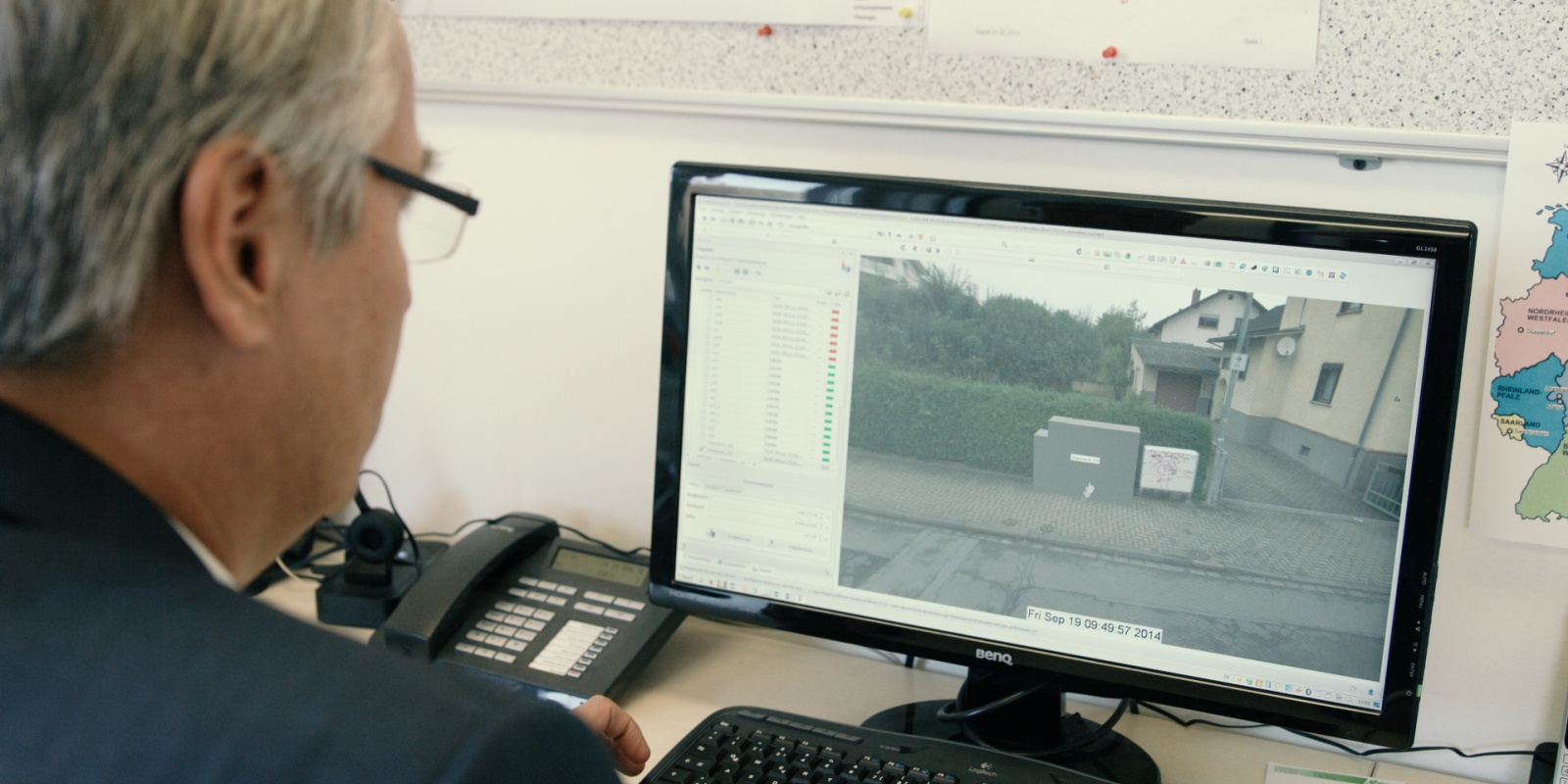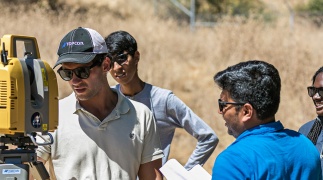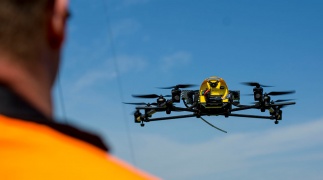Mobile mapping: finding the gray boxes of the internet
Expanding Germany’s biggest broadband network

Can you still remember life without the Internet?
By now, it’s so deeply embedded in our personal and professional lives that having access anywhere is all the more vital. Deutsche Telekom, Germany’s main telephone and Internet provider, wants to serve the entire country with fast Internet. Though this is already being taken for granted in larger urban areas, rural areas have found it more difficult to implement fast connections.
North, south, east, west
That is why Deutsche Telekom is currently expanding its network. The provider has turned to Kempen-based engineering office Geotechnik for expert assistance. “We support Deutsche Telekom’s glass fiber network expansion with our mobile mapping systems,” says Norbert Kuck, the company’s Managing Director.
As Kuck explains, Geotechnik performs mapping runs and plans the location of multifunctional cabinets, the usually gray boxes in the street where the fiber is positioned to connect your devices to the Internet. Kuck: “We can be found all over Germany with this project, from north to south and from east to west, on our way from our headquarters in Kempen.”

We support Deutsche Telekom’s glass fiber network expansion with our mobile mapping systems.
From the road to the data
Geotechnik provides the cartography for wiring and cables, with the aim of removing old cabinets as well as installing new ones. “We document this with different Geographic Information Systems,” says Kuck. “Additionally, we make 2000 new images with our mobile mapping systems. To that end, we visit various communities and take pictures of street lighting, trees, manhole covers and sanitation facilities along the route planned for Deutsche Telekom.”
Paul Kamper, Geotechnik’s team leader Engineering & Measurement, who has been working for the company for 29 years, tells us about the process: “The first step is usually taken on Friday. It includes data preparation: which vehicles will go where in the next week? We check the weather, prepare the maps, upload data into the car’s software. During the week I monitor the cars and check what has been done on the different routes. Our specialists are usually under way from Monday through Thursday. When they come in on Friday, the data is stored and shared with our customer, and the data processing and post-processing begins.”
“The data which we record with our mobile mapping system is processed and geo-referenced in-house. We use this data to select and plan the new cabinets, either on the same location or on a different one. The documents are then prepared for approval under the German Telecom Law,” Kuck explains.
As in any project, some challenges arise. “In-house, our main concerns are the narrow roads when planning superstructures for old cabinets, and the lack of space in inner cities for the placement of multifunctional cabinets,” says Paul Kamper. “In the field, it’s bad weather. We can’t work in bad weather. Luckily, this year has been very good weather-wise.”

“We have to be very diligent when driving through these towns, to capture all the information our customer needs.
Diligence
Which technology does Geotechnik use to ready all these towns and villages for lightning-fast Internet? “We use the Topcon IP-S2 and IP-S3 Mobile Mapping Systems on our cars,” says Marcel Strijbos, surveyor at Geotechnik. The Dutchman navigates the cars and operates the software. “We have to be very diligent when driving through these towns, to capture all the information our customer needs. The IP-S systems are user-friendly and practical. I can set them up by myself and take them down again by myself.”
“Geotechnik has used Topcon measuring equipment since 1990,” says Norbert Kuck. “It came natural to us that we would start using Mobile Mapping Systems. Together with our sister company Geomij, we purchased the first IP-S system in 2010, followed by an IP-S2 Compact Plus in 2012. Recently, because of our long-term project for Deutsche Telekom, it was followed by an IP-S3. The IP-S3 yields far more scanning points and significantly better imagery.”
Thanks to Geotechnik’s meticulous preparations, Deutsche Telekom will be able to provide many more German households with a top-notch Internet connection in 2018. Much more data will be travelling at incredible speeds, all through these gray boxes in the streets.
 MAGNET Productivity Suite
MAGNET Productivity Suite OEM Components & Technology
OEM Components & Technology Crop Sensing
Crop Sensing Water Conservation
Water Conservation Ag Connectivity and Data Management
Ag Connectivity and Data Management Agricultural Machine Control
Agricultural Machine Control GNSS Receivers for Agriculture
GNSS Receivers for Agriculture Consoles and Displays for Ag
Consoles and Displays for Ag Mass Data and Volume Collection
Mass Data and Volume Collection Enterprise Services and Subscriptions
Enterprise Services and Subscriptions  Lasers, Levels & Theodolites
Lasers, Levels & Theodolites Paving, Milling
Paving, Milling  Excavating and
Excavating and  Rough and Fine
Rough and Fine  GNSS & Network Solutions
GNSS & Network Solutions Field Controllers
Field Controllers Software Solutions
Software Solutions Total Station Solutions
Total Station Solutions

